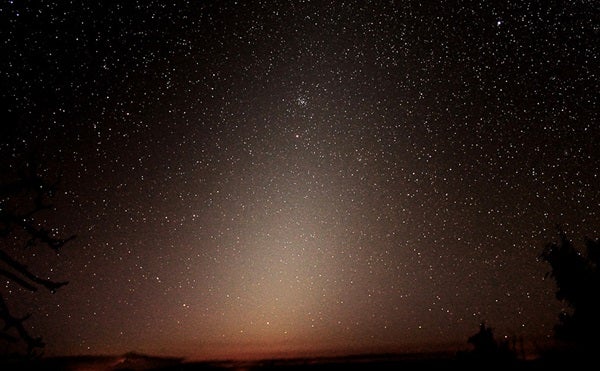The Moon’s absence from the morning sky over these next two weeks provides observers with an excellent opportunity to view the hazy glow of zodiacal light.
From the Northern Hemisphere, the time around the autumnal equinox (which occurred 2.5 weeks ago) is the best for viewing the dim radiance before sunrise.
Zodiacal light appears slightly fainter than the Milky Way, so you’ll need a clear moonless sky and an observing site located far from the city to spot it. Look for a cone-shaped glow that points nearly straight up from the eastern horizon shortly before morning twilight begins (around 5:30 a.m. local daylight time at mid-northern latitudes).
The faint glow of zodiacal light is the result of sunlight reflecting off of dust scattered throughout the solar system. This dust is thought to be leftover from the initial formation of the planets some 4.5 billion years ago, and, therefore, is heavily concentrated within the plane of the solar system.
Make sure to take advantage of this opportunity quickly, though. The Moon remains out of the morning sky until October 23, when the waxing gibbous returns and overwhelms the much fainter zodiacal light.










